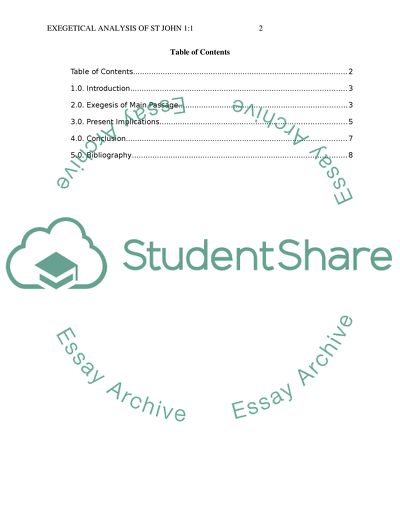Cite this document
(“Exegetical analysis of St John 1:1 giving keen attention to the Essay”, n.d.)
Exegetical analysis of St John 1:1 giving keen attention to the Essay. Retrieved from https://studentshare.org/religion-and-theology/1626197-exegetical-analysis-of-st-john-11-giving-keen-attention-to-the-concept-of-logos-and-its-contextual-implications
Exegetical analysis of St John 1:1 giving keen attention to the Essay. Retrieved from https://studentshare.org/religion-and-theology/1626197-exegetical-analysis-of-st-john-11-giving-keen-attention-to-the-concept-of-logos-and-its-contextual-implications
(Exegetical Analysis of St John 1:1 Giving Keen Attention to the Essay)
Exegetical Analysis of St John 1:1 Giving Keen Attention to the Essay. https://studentshare.org/religion-and-theology/1626197-exegetical-analysis-of-st-john-11-giving-keen-attention-to-the-concept-of-logos-and-its-contextual-implications.
Exegetical Analysis of St John 1:1 Giving Keen Attention to the Essay. https://studentshare.org/religion-and-theology/1626197-exegetical-analysis-of-st-john-11-giving-keen-attention-to-the-concept-of-logos-and-its-contextual-implications.
“Exegetical Analysis of St John 1:1 Giving Keen Attention to the Essay”, n.d. https://studentshare.org/religion-and-theology/1626197-exegetical-analysis-of-st-john-11-giving-keen-attention-to-the-concept-of-logos-and-its-contextual-implications.


